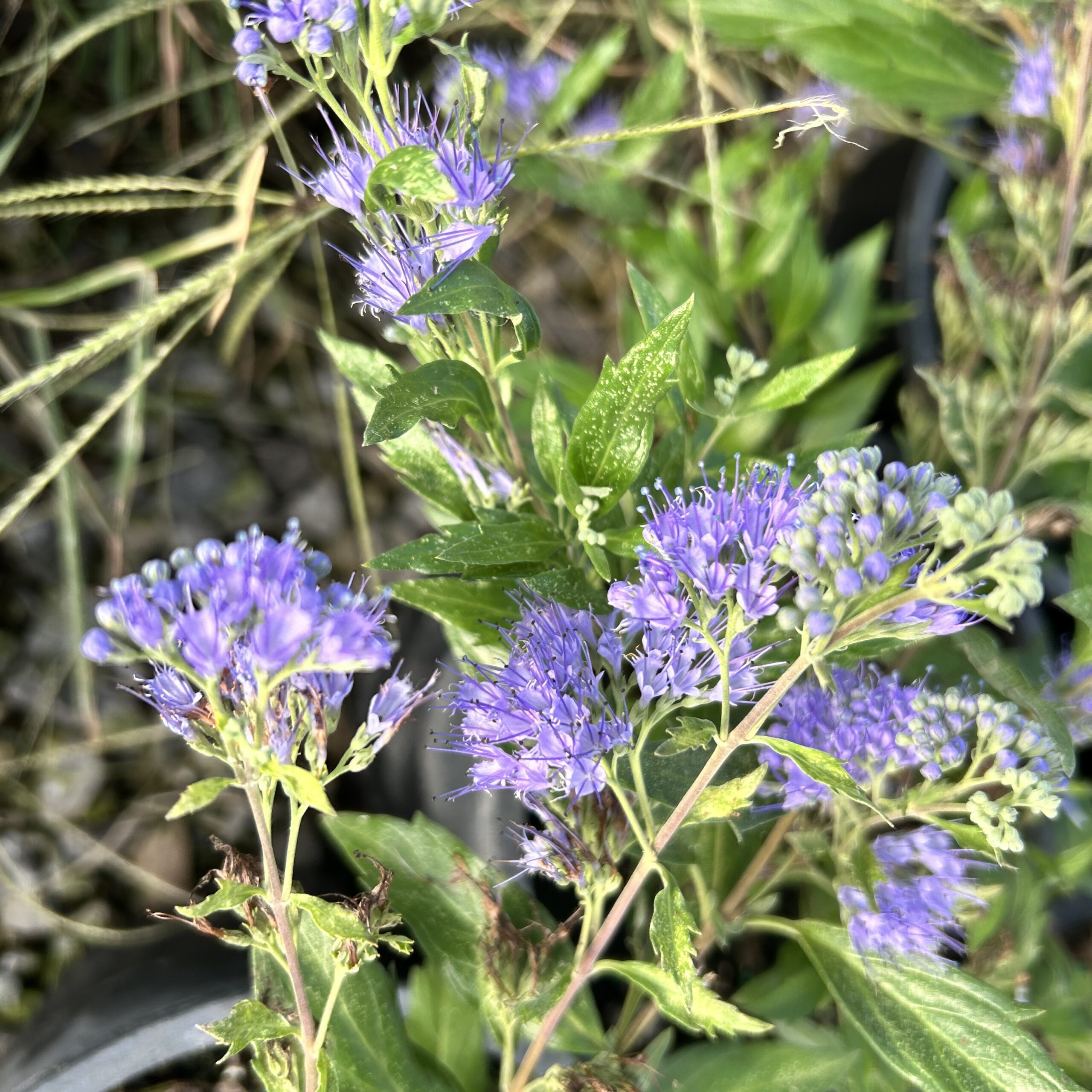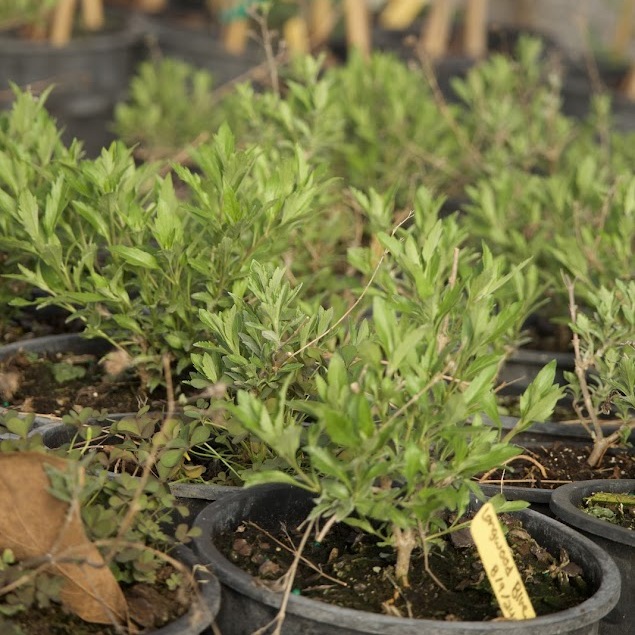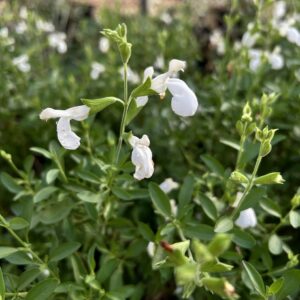Longwood Blue – Caryopteris x clandonensis
Overview: Longwood Blue, scientifically known as Caryopteris x clandonensis, is a deciduous shrub renowned for its beautiful blue flowers and aromatic foliage. Originating from a hybrid between Caryopteris species, this plant is prized for its late summer to fall blooms, which attract pollinators and add vibrant color to the garden during a time when many other plants are fading.
Typical Uses:
Longwood Blue serves various purposes in garden and landscape design:
- As a border or edging plant, providing late-season color and structure
- In mixed perennial borders, complementing other flowering plants with its blue blooms
- In wildlife gardens to attract bees, butterflies, and other pollinators
- In containers on patios, decks, or balconies, adding vibrant color and fragrance
Establishment and Care Instructions:
Planting: Choose a site with well-drained soil and full sunlight. Dig a hole twice as wide and as deep as the root ball. Place the plant in the hole, ensuring the top of the root ball is level with the soil surface. Backfill with soil and water thoroughly.
Watering: Water regularly during the first growing season to help the plant establish. Once established, Longwood Blue is moderately drought-tolerant and only requires supplemental watering during prolonged dry periods.
Pruning: Prune in late winter or early spring to shape the plant and encourage vigorous new growth. Cutting back to about one-third of its height promotes a dense, bushy form and abundant flowering.
Fertilizing: Apply a balanced fertilizer in spring to support healthy growth and abundant flowering. Avoid excessive fertilization, which can lead to lush foliage at the expense of blooms.
Special Features and Usage:
Longwood Blue offers several distinctive features:
- Flowers: Clusters of bright blue flowers bloom from late summer to fall, providing vibrant color and attracting bees and butterflies.
- Foliage: Aromatic, silvery-green leaves add texture and a pleasant fragrance to the garden.
- Drought Tolerance: Once established, Longwood Blue is moderately drought-tolerant, making it suitable for low-water landscapes.
- Pollinator Friendly: An excellent nectar source for bees and butterflies, supporting garden biodiversity and pollination.
- Low Maintenance: Requires minimal care once established, including light pruning and is generally resistant to pests and diseases.
- Adaptability: Thrives in a variety of soil types, including sandy and rocky soils, and is tolerant of heat and urban conditions, making it a versatile addition to many garden settings.








Reviews
There are no reviews yet.